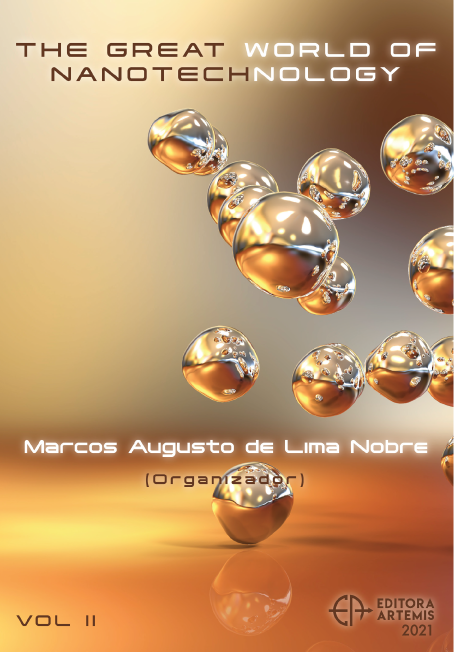
OBTENÇÃO E CARACTERIZAÇÃO DE NANOCRISTAIS DE CELULOSE A PARTIR DE PAPEL RECICLADO VIRGEM E PÓS-CONSUMO
Papel reciclado virgem e pós-consumo foram avaliados para obtenção de nanocristais de celulose. As amostras picotadas foram pré-tratadas por lavagem a quente com água, tratamento com NaOH(aq) e branqueamento com NaClO(aq). Os papéis branqueados foram hidrolisados com H2SO4(aq) 55% para obtenção dos nanocristais. Os perfis de DRX dos papéis não tratados apresentaram, além dos picos de celulose I, picos referentes a aditivos presentes no papel, índice de cristalinidade na faixa de 70-80%, similar à celulose microcristalina. O fluxo de birrefringência das suspensões permitiu inferir que nanopartículas foram obtidas, sendo que aquelas obtidas do papel virgem (ξ= -24,6 ± 0,3 mV) apresentaram-se mais dispersas em relação ao pós-consumo (ξ= -13,8 ± 0,5 mV). FTIR em conjunto com análise térmica indicam pigmento residual que influenciam na estabilidade térmica dos nanocristais obtidos. Para os nanocristais sem pigmento, verificou-se maior temperatura de degradação da celulose em comparação a nanocristais comerciais avaliados em comparação.
OBTENÇÃO E CARACTERIZAÇÃO DE NANOCRISTAIS DE CELULOSE A PARTIR DE PAPEL RECICLADO VIRGEM E PÓS-CONSUMO
-
DOI: 10.37572/EdArt_30062136117
-
Palavras-chave: Nanocristais, Nanopartículas, Celulose, Papel reciclado.
-
Keywords: Nanocrystals, Nanoparticles, Cellulose, Recycled paper.
-
Abstract:
Virgin and post-consumer recycled office paper were evaluated to obtain cellulose nanocrystals. The shredded samples were boiled with water prior the alkali treatment with NaOH(aq) and bleaching with NaClO(aq). The bleached papers were hydrolyzed with 55% H2SO4 (aq) to obtain the nanocrystals. The XRD profiles of untreated papers showed, in addition to the cellulose peaks, peaks related to additives present in the paper, as well crystallinity index in the range of 70-80%, similar to microcrystalline cellulose. The birefringence flow of the suspensions made it possible to infer that nanoparticles were obtained, and those obtained from virgin paper (ξ= -24.6 ± 0.3 mV) were more dispersed in relation to post-consumper (ξ= -13.8 ± 0.5 mV). FTIR spectra deals with thermal analysis and indicates some remaining ink that influences the thermal stability of the obtained nanocrystals. Impure nanocrystals displayed higher degradation temperature than commercial nanocrystals assumed as standards.
-
Número de páginas: 7
- Jean Brito Santos
- Emanoel Igor da Silva Oliveira
- Nádia Mamede José

